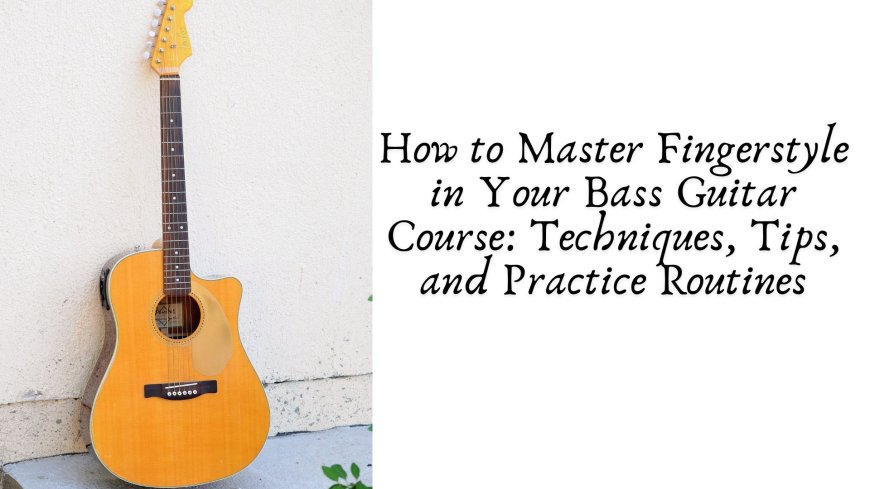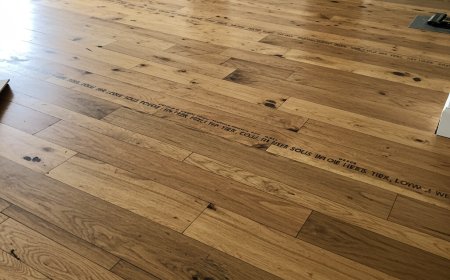How to Master Fingerstyle in Your Bass Guitar Course: Techniques, Tips, and Practice Routines
Mastering fingerstyle bass guitar is not an overnight process—it requires patience, discipline, and mindful practice

Mastering fingerstyle technique on the bass guitar is a transformative step for any budding bassist. Unlike using pick or slap techniques, fingerstyle playing allows for greater dynamic control, tonal richness, and rhythmic precision. Its the foundation for genres ranging from jazz and funk to rock and soul. Whether youre a beginner or refining your skills in a bass guitar course, this guide will walk you through everything you need to know to master fingerstyle technique effectively.
Understanding Fingerstyle: What It Is and Why It Matters
Fingerstyle playing involves using the fingersusually the index and middle fingersto pluck the strings. Advanced players may incorporate the ring finger and thumb as well. This method allows for:
-
More nuanced control of tone and volume
-
Improved rhythmic accuracy
-
Versatility across musical genres
Fingerstyle is often the go-to technique for bass players aiming for smooth, groove-driven lines or intricate melodic passages.
Step-by-Step Techniques to Build Your Fingerstyle Skills
Positioning Your Hand Correctly
Start by placing your thumb on the pickup or the E string as an anchor. Your wrist should remain relaxed and slightly curved, allowing your fingers to move freely. The index and middle fingers should alternate naturally.
Tip: Avoid digging too deeply into the strings; a lighter touch often produces a clearer tone and reduces fatigue.
Finger Alternation Drills
Alternate between your index and middle fingers to develop consistency. Practice slow scales or chromatic runs focusing on even tone and rhythm.
-
Start with open string plucking (e.g., E string: i-m-i-m-i-m).
-
Move to fretted notes using scales like G major or C major.
-
Use a metronome to keep your tempo steady.
String Crossing Exercises
Many beginners struggle with transitioning between strings smoothly. Practice exercises where you move from the E to A to D to G strings in various combinations, ensuring each note is clean.
Exercise: Play ascending and descending arpeggios, focusing on the clarity and dynamics of each note.
Muted and Ghost Notes
Muting is essential for groove-based playing. Use your left hand to slightly touch the string while plucking, creating a percussive "thump" sound. These ghost notes add a rhythmic element to your lines.
Practice Idea: Alternate between fretted notes and ghost notes in a 4-beat measure (e.g., 1-note, 2-ghost, 3-note, 4-ghost).
Thumb Involvement and Advanced Techniques
Some advanced players use their thumb to play root notes or even chord tones, a technique borrowed from classical guitar. Incorporating three-finger plucking (i-m-a or i-m-thumb) can increase speed and versatility.
Practice Routines to Master Fingerstyle
Daily Practice Schedule (30 Minutes):
-
5 mins: Warm-up with finger alternation drills on open strings.
-
10 mins: Scales and arpeggios across all four strings.
-
5 mins: Ghost notes and muting techniques.
-
5 mins: Play along with backing tracks (funk, soul, jazz).
-
5 mins: Improvise your own basslines focusing on finger control.
Weekly Challenge Ideas:
-
Record a groove using only fingerstyle.
-
Play a favorite song using fingerstyle instead of a pick.
-
Focus on one genre each week to explore stylistic nuances.
Integrating Fingerstyle into Your Bass Guitar Course
Your bass course likely includes structured lessons on technique, theory, and performance. Heres how to maximize fingerstyle learning in that context:
-
Ask for fingerstyle-specific exercises during technique modules.
-
Choose fingerstyle-friendly songs for performance assignments.
-
Collaborate with classmates to analyze and play fingerstyle-heavy tracks.
-
Use video recordings to monitor hand positioning and tonal consistency.
Some great songs to learn fingerstyle technique include:
-
Come Together by The Beatles
-
Sir Duke by Stevie Wonder
-
So What by Miles Davis (played on upright but great for fingerstyle practice)
-
Another One Bites the Dust by Queen
Final Thoughts: The Power of Persistence
Mastering fingerstyle bass guitar is not an overnight processit requires patience, discipline, and mindful practice. However, the rewards are immense. As your confidence grows, youll notice greater musical expression, fluidity in bass lines, and deeper connection to rhythm.
Take your time, enjoy the journey, and remember: even the greatest bassists started with slow fingerstyle drills. With consistent effort and guidance from your course, fingerstyle can become your most powerful tool in crafting expressive, dynamic bass performances.









































